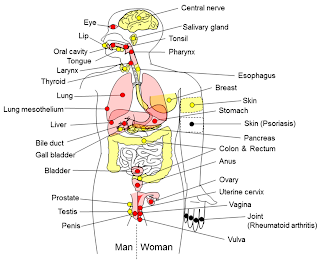The probability
of one patient has ankylosing spondylitis (AS) and rheumatoid arthritis (RA) is
low.
It is usually
difficult to diagnose the association, indeed we require a careful diagnostic
process and more tests are needed.
A 21-year-old
female patient with coexisting AS and RA was reported here. 9 months later, she
developed peripheral polyarthritis, erosion changes on the radiography of
Metatarso-phalangeal (MTP), rheumatoid factor and cyclic
citrullinated peptide antibody (anti-CCP) were positives. Here, we describe the
diagnostic process that we followed.
















